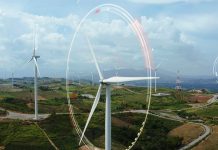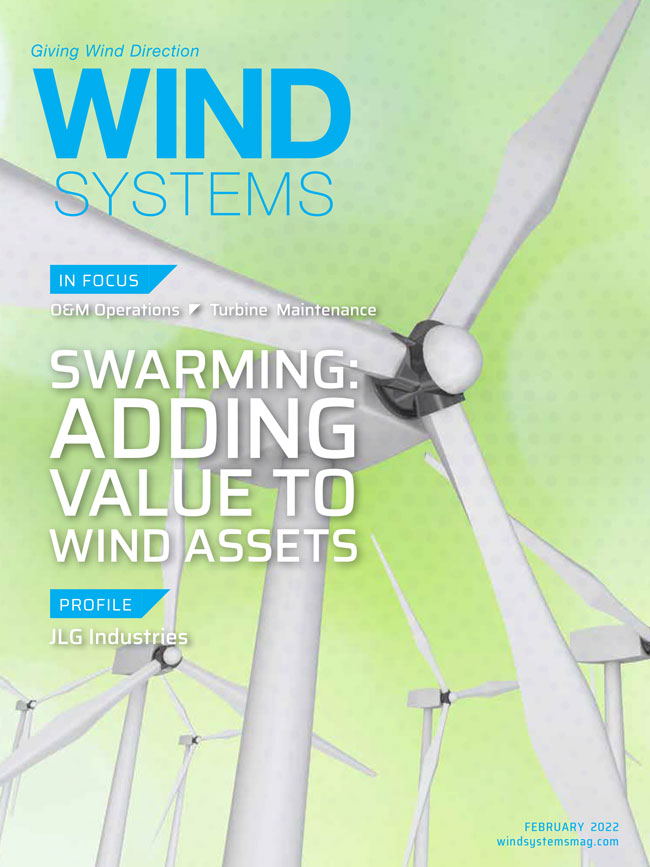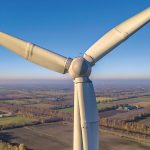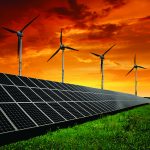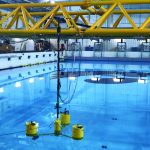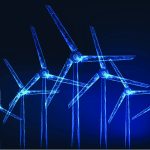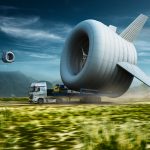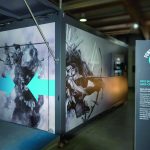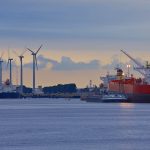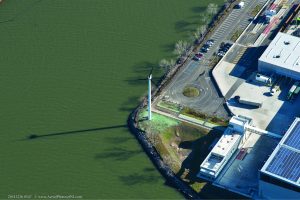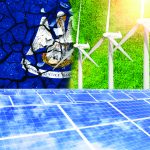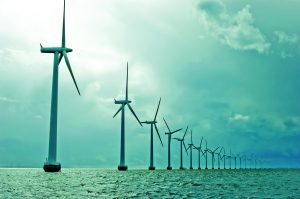Reminiscent of windmills from a bygone era, floating wind platforms using drag-based-design turbines could actually usher in new and exciting ways to harness and take advantage of wind energy.
The advantages of a turbine using drag-based design as opposed to the traditional lift-based design are “night and day,” according to Mark Cann, CEO and co-CTO of CryomatiKs, a product development company that specializes in zero emission technology.
A conventional three-blade wind turbine, which has essentially become the de facto standard today, is constructed with composite-based materials with a large swept area and hub height. So, right away, the cost for a drag-based design turbine, based on a concept developed by Herbert Williams, becomes less of an issue.
“When you’re looking at the upfront material costs, there is a night-and-day difference between material cost,” Cann said. “With the Williams Turbine, it’s literally just steel and aluminum. There is nothing exotic. There are no resins required. There’s no special tooling required. In terms of the manufacturing, you cannot get anything simpler than the physical construction and the layout. That’s really what drives everything. Instead of starting off with something that is very, very expensive, you’re starting off with something that’s very, very low cost. That opens up other things that may not be practical without that low cost.”
With those lower construction costs, gearboxes in the Williams Turbine are mounted in the base, not up in the hub as in traditional turbine designs, according to Cann. This design allows for multiple mounting points at the bottom that splits up the load, and because the drag-based design doesn’t create a massive wake, the turbines can be constructed very close together, making them perfect for offshore floating platforms.
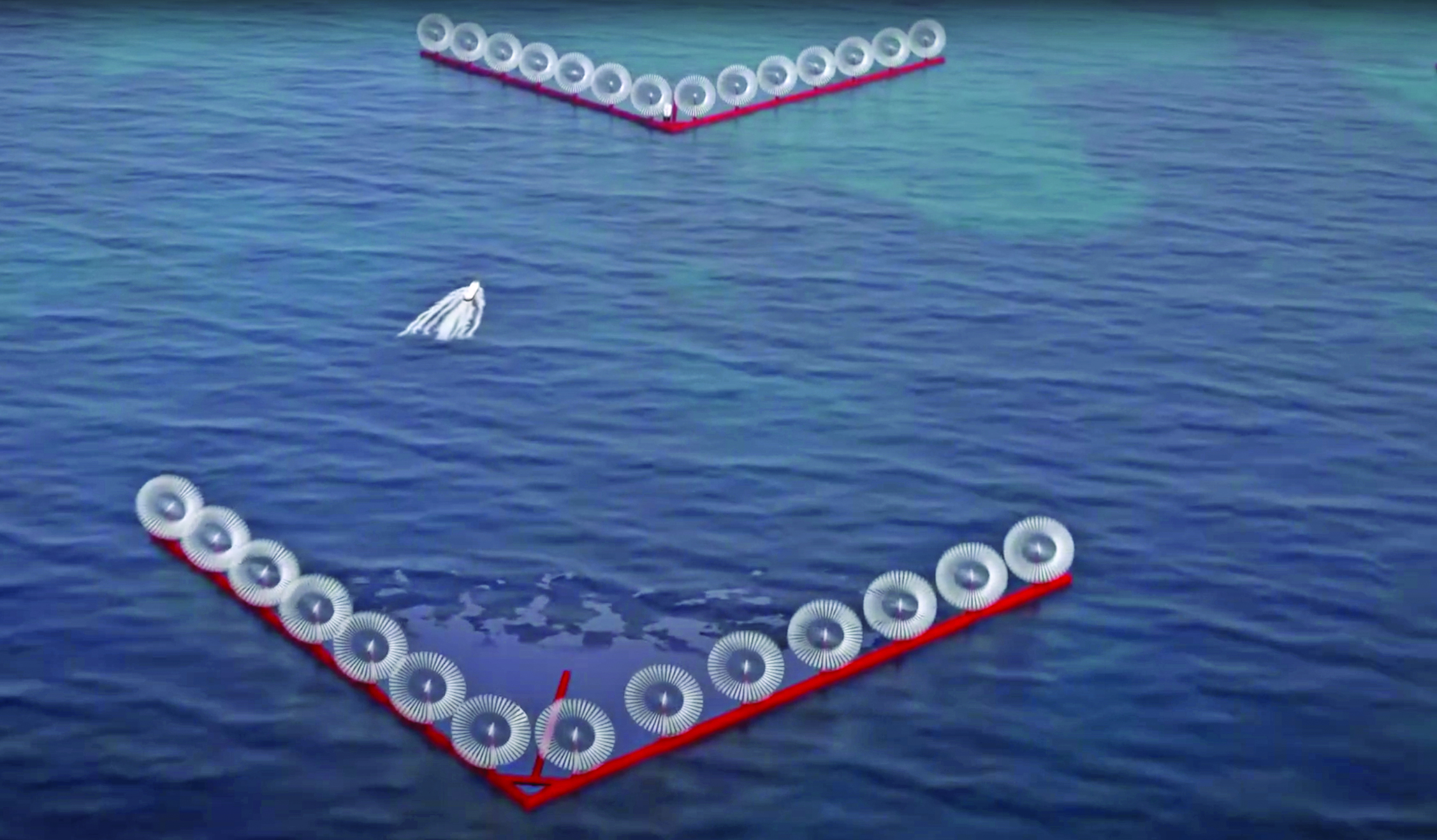
Promising Innovation
The offshore platforms using the Williams Turbine have a number of sell points, including an option for a 50-year system lifecycle with routine maintenance performed at sea; a single anchor point instead of multiple anchor points for buoy and tension-based designs; an option for 100-plus MW for a single common platform; multiple gearboxes mounted on the base to help support the mass of the turbine while allowing for the maintenance of liquid air and hydrogen equipment without stopping the turbine; a turbine design that provides a “flywheel” effect so, as the wind varies second by second, the rotation of the turbine itself smooths the output; and the ability to operate at very high winds (20-plus meters a second) without shutting down.
Currently, the Williams Turbine design has been tested with 15- to 25-kW models, with a 1-MW test model being built with a 30-meter diameter, according to Cann. But the tentative goal is to eventually mass produce 70-meter-diameter, 5-MW models.
Cann pointed out that there are a few tradeoffs with the drag-based design when it comes to the power coefficient.
“Your power coefficient’s going to be a little bit lower,” he said. “You’re going to see maybe a 0.3 power coefficient instead of some of the more advanced systems, which are over 0.4. At the same time, you’re also able to operate at a lower wind speed. It’s based on drag of 8 to 10 meters per second, which obviously is that great sweet spot, but you’re still generating output down to say 4 meters per second. Obviously, it’s a lot lower because the wind speed is a cube of your power.”
Producing Green-Based Gases
More often than not, a turbine’s capacity factor may be much less than that 8-to-10-meters-per-second “sweet spot,” but, even if it’s consistently lower, the turbines are still generating power, which is part of what makes the Williams Turbine design an innovative way to produce byproducts that include green hydrogen, green ammonia, liquid oxygen, and liquid nitrogen — especially when the lower production costs are factored in, according to Cann.
“If you look at a liquefaction facility, especially a large scale one, over the lifetime of that facility, up to 90 percent of their operating costs is electricity,” he said. “It’s not just a large cost; it’s the single largest cost for that entire facility. The rest is really just maintenance and then just your regular payroll and things like that. Electricity is the No. 1 driver. So, at the end of the day, what it costs to liquefy the air is what your power costs. So, going back to the floating wind turbine, when you’re able to tap into these resources that have a high-capacity factor, you get 50- or 60-percent capacity factor and your upfront CapEx is less than a dollar per watt. What that really means is that your cost to produce goes down dramatically, way, way lower than what you could ever get for a grid-based system.”
With a floating platform, a major challenge is always the cost of transporting that power to land, according to Cann. The best wind resources are not close to the shore, so one of the most expensive parts of offshore wind is the undersea cable that connects to the grid. Once connected to the grid, however, surplus power often has nowhere else to go.
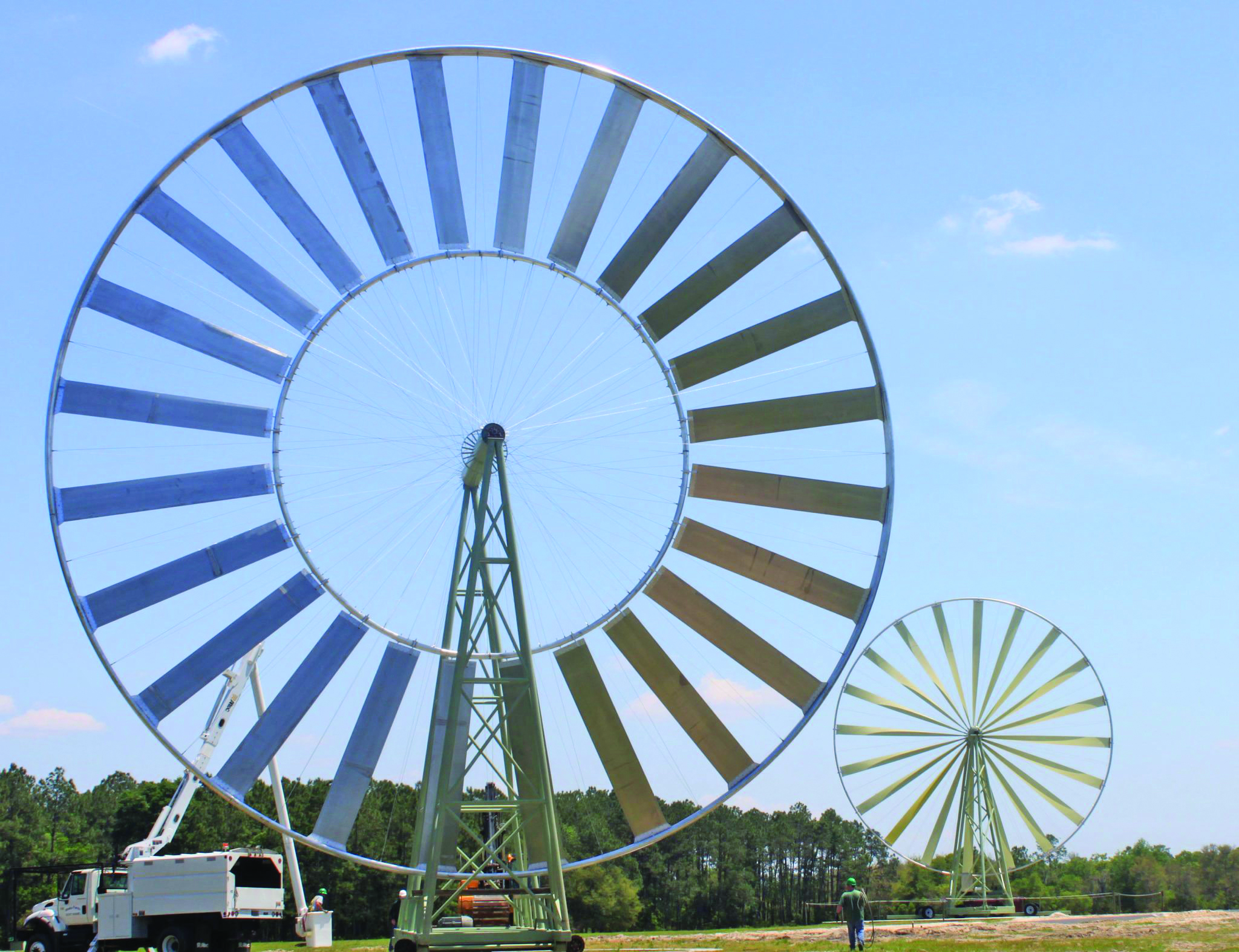
Built-In Storage System
The floating platform constructed with drag-based turbines can become a unique storage system for liquid air and other green-created gases, according to Cann.
“Basically, the platform is a system within a system,” he said. “You have the ‘exterior’ of the platform, and that is your conventional marine setup. That’s designed to survive 40, 50, 60 years out in the open water in the salt. Within that system, we then have storage tanks that are either set up for liquid air or hydrogen or green ammonia. The platform itself ends up being the storage for the output of those systems. Let’s just take liquid air, for example. You have your main platform and then, within that main platform, you can have anywhere from six to 20 individual tanks, and those tanks are going to be storing liquid air.
Those are essentially isolated within the main platform. Then, depending on where the system is located, it’s either going to be a barge or something in that neighborhood that’s doing the transport, so your offload is actually built into the platform.”
Simpler Construction
Since the platform is essentially a storage system, it doesn’t require a different build-out for the storage, according to Cann. It’s literally built into the platform from the beginning.
“Everything is designed to be done in dry dock, and then it’s simply towed out,” he said.
“Whereas some of these other systems where you have these really specialized, customized crane ships and other things that you have to build, you don’t have any of that. Again, going back to the construction, for the most part, now things are just assembled together and then taken out to sea. Because there are no special tools or anything, you can literally do your assembly right at the dry dock. For the most part, there’s not very much equipment that’s required. You actually do your assembling right at the dry dock, and it gets towed out. Once it’s actually in its location — I’m going to oversimplify and say a winch system — but essentially once everything is in the right position, then each turbine can then be winched into a standing position.”
And since the construction of these offshore platforms made up of Williams Turbines is so cost effective, it eventually becomes an economically feasible way to create alternative fuels, according to Cann.
“We’re trying to eliminate all the expensive pieces that are normally there,” he said. “You eliminate your expensive materials. You eliminate the specialized equipment. You eliminate the undersea cables, which are a million dollars a kilometer, and you start eliminating all these most expensive things. Again, we definitely have a trade-off of that there are losses involved when you convert into another storage medium. But when you look at it from an economic standpoint, not having these other expenses actually ends up working in your favor.”
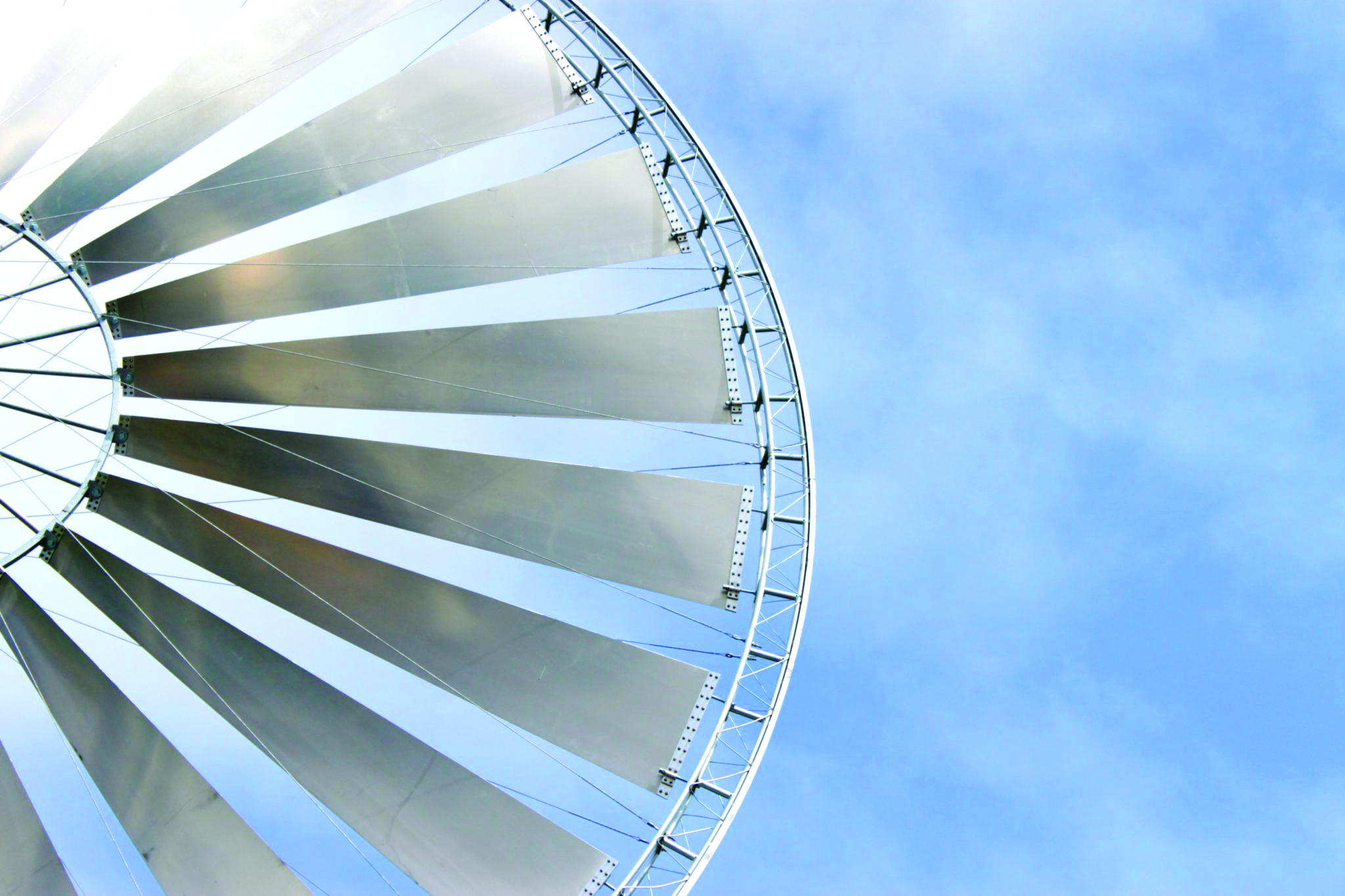
Pinpointing Premium Wind Areas
The global map of wind resources boasts locations with 70 percent capacity with mean wind speeds of more than 12 to 13 meters per second, according to Cann.
“It’s just unbelievable resources,” he said. “And those are going to have to be floating wind systems in order to access that. I think there’s a realization that people are saying, ‘Wait a minute, there are these unbelievable resources.’ In order to tap in those resources, you’re going to have to go with floating offshore for wind technology. At the same time, there is huge demand growing for green hydrogen and green ammonia. It’s able to meet these different needs all at the same time.”
Implementation of these floating wind platforms are ideal for areas that don’t have a well-established infrastructure, according to Cann.
“If you were to take the 35 degrees north, 35 degrees south around the globe and make that like a band all the way around, that’s our prime market for liquid-air technology,” he said. “The reason why is because, in those markets, those are all your warmer climates, and we have air conditioning and refrigeration available as a byproduct, and it’s extremely valuable in those climates. Those are the markets we’re going into, and those are also the same markets where they don’t have a lot of existing infrastructure like we do here in the U.S. They don’t have 100 years’ worth of infrastructure. For example, you take a market like Africa, which most people would look at and go, ‘Wait, are you guys crazy?’ But then, if you actually look at it, they have unbelievable wind resources that are available to us. At the same time, they don’t have the grid infrastructure for us to go in and set up a bunch of liquefaction facilities. So, it becomes this natural tie-in where we essentially create our own supply chain as we grow adoption of our EV technology in those markets.”
And that means replacing fossil fuels with green-produced gases where fossil fuels are the only method to power generators, according to Cann.
“Any time a market is island-based, they’re going to rely heavily on diesel,” he said. “We’re trying to do everything that we can to displace diesel, so there’s definitely an opportunity in some of those markets to be able to go in there and not only just assist with their electricity, but then get into their transportation with their commercial vehicles and buses.”
Range Extender Origins
The EV technology that Cann referred to began as a range extender for EVs, which is essentially a high-speed expander with a high-speed generator.
“It’s ironic because the high-speed expander is a rotor; it has a five-inch diameter, and it rotates at 40,000 RPMs,” he said. “Now, we’re dealing with something that’s 100 feet in diameter, and it rotates at single digits. But what happened was we were in the process of commercializing the range extenders, and then in a very, very short timeframe, we’re essentially going to be one of the largest consumers of liquid air on the planet. So, we are very aggressive about making sure that we’re going to have a supply chain in place to do that.”
In addition to the need for liquid air, there’s also a need for liquid nitrogen, according to Cann.
“There’s already a global supply chain for liquid nitrogen,” he said. “We’re not starting from scratch. We’re already starting from something that’s there. At the same time, there’s also economic constraints to that, which is that those existing companies have their margins that they’re going to maintain, and so there’s just a limit to what we can do with the existing supply chain.”
Expanding Scope
An ironic element of CryomatiKs’ involvement in deploying these floating platform systems is the company originally was just looking to be responsible for the end result, as opposed to the creation and development, according to Cann.
The drag-design turbines developed by Williams and his company, Keuka Energy, were initially seen as a way for CryomatiKs to buy and distribute the liquid air and other products produced, but that goal quickly changed as Cann and his team saw the potential of the floating platforms.
“It just so happens that Mr. Williams is getting ready to start enjoying his retirement,” Cann said. “He’s still involved with the technical side of things, but when it comes to actual deployment, he essentially is turning it over to the next generation, if you will. That opened the door for us to say, ‘You know what? We really want to be able to secure our supply chain.’
“We’re already, basically, going to be one of the biggest customers of the output of these systems. We are already talking to other companies about doing partnerships so that we can share the output for these systems, so we just ended up taking the very next step and said we’re just going to become a licensee, and we actually are going to help deploy these systems all together. We didn’t start out intending to actually be the ones helping to bring these floating wind platforms to market.
“That was not our goal. But now, we’re saying, ‘Look, whatever the output from the system is, we want to be involved, and we’re definitely willing to have strategic partnerships and do everything we can to accelerate the build-out of these systems because, at the end of the day, it benefits us.’”
More info cryomatiks.com


















